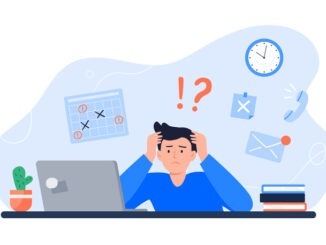
Practice managers are feeing increasingly overwhelmed by lack of time – Joanna Fox, an experienced HR and people manager consultant, shares her best practice for better time management

Why is it that too many practice managers feel overwhelmed, pressured, and stressed by time (or lack of it)? To explore this, here are some examples of how you can better control it.
Time management theory reflects a person’s ability to self-manage their time. Along its daily journey, your time will meet obstacles, challenges, and sometimes outright time thief’s that are unintended consequences of your role. How do you recognise these, overcome them, and better manage your time throughout the day?
Control your emails
Time can be taken up with emails and, its new companion, WhatsApp. Emails that are likely to disrupt your inbox lack in clarity of what to do with them or are sent from a distribution list, so it’s unclear whether they are for you in the first instance. However, whilst you cannot be accountable for how others send emails, the volume of time you spend on emails and procrastinating about what to do with it are. A way to take control is to create categories for your emails – like colour coding them to be able see at quick glance which ones require your attention. Try not to have more than ten categories, as this will help to keep your management of them concise, with no email being attributed more than a couple of tags.
TOP TIP: Do not check emails, instead sort them and apply a tag. Action tags should then be moved into your diary so you can allocate time for this task.
Give your to-do lists a time limit
To do lists could be getting in the way of achieving good time management. When you have a to do list, are you writing next to each item how long it will take, and over what time you must complete it? If the answer is no, then it is time to reset your default way of working and consider moving your ‘to do lists’ or ‘task lists’ into a diary where time allocation can be included. Taking this time management approach will help you to shift from fighting fires and buckling under the pressure of ‘urgent’ tasks, to that of ones which are not urgent but are important, for you to be working through. It will also help you to articulate to others the expectations and the boundaries you work within.
TOP TIP: Ditch the ‘task list,’ and ‘diarise the do-list.’ Allow for wriggle room in your diary to give you breathing space.
Prioritise meetings
To help you better understand whether you should attend meetings, you should ask yourself this question: ‘does the meeting invite have an agenda/clear purpose?’ If the answer is no, don’t accept the invite until it does. It is difficult to make an informed decision about where best to place your time if you are not cited on the topics and agenda items to know whether you can contribute and give or take value from attending
TOP TIP: A way to help you understand whether you should be attending meetings or not, is to do the maths quite simply on the cost of your attendance, and that of colleagues in local meetings. Is the cost worth its return on investment?
Know your limits
Attention to detail is finite. Reflect on the types of tasks you are achieving when you are fully focused, alert and in the zone and acknowledge when this happens in your working day. You should also identify what tasks you are trying to work through when you have an inactive attention and what time of the day that is. It is important to recognise when you have reached an inactive attention state where the tank is running on empty and need to go home.
If you work beyond your working hours regularly, you are a suitable case study to be implementing some, if not all these recommendations.


Be the first to comment